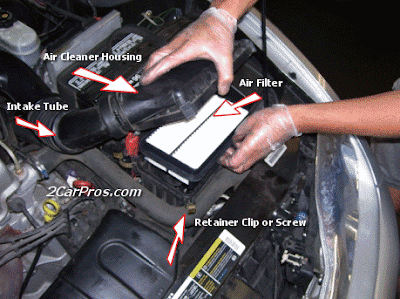Inside an Electric Car
The heart of an electric car is the combination of:
- The electric motor
- The motor's controller
- The batteries

A simple DC controller connected to the batteries and the DC motor. If the driver floors the accelerator pedal, the controller delivers the full 96 volts from the batteries to the motor. If the driver take his/her foot off the accelerator, the controller delivers zero volts to the motor. For any setting in between, the controller "chops" the 96 volts thousands of times per second to create an average voltage somewhere between 0 and 96 volts. |
The controller takes power from the batteries and delivers it to the motor. The accelerator pedal hooks to a pair of
potentiometers (variable resistors), and these potentiometers provide the signal that tells the controller how much power it is supposed to deliver. The controller can deliver zero power (when the car is stopped), full power (when the driver floors the accelerator pedal), or any power level in between.
The controller normally dominates the scene when you open the hood, as you can see here:

The 300-volt, 50-kilowatt controller for this electric car is the box marked "U.S. Electricar."
|
In this car, the controller takes in 300 volts DC from the battery pack. It converts it into a maximum of 240 volts AC, three-phase, to send to the motor. It does this using very large transistors that rapidly turn the batteries' voltage on and off to create a sine wave.
When you push on the gas pedal, a cable from the pedal connects to these two potentiometers:

The potentiometers hook to the gas pedal and send a signal to the controller.
|
The signal from the potentiometers tells the controller how much power to deliver to the electric car's motor. There are two potentiometers for safety's sake. The controller reads both potentiometers and makes sure that their signals are equal. If they are not, then the controller does not operate. This arrangement guards against a situation where a potentiometer fails in the full-on position.

Heavy cables (on the left) connect the battery pack to the controller. In the middle is a very large on/off switch. The bundle of small wires on the right carries signals from thermometers located between the batteries, as well as power for fans that keep the batteries cool and ventilated.
|

The heavy wires entering and leaving the controller
|
The controller's job in a DC electric car is easy to understand. Let's assume that the battery pack contains 12 12-volt batteries, wired in series to create 144 volts. The controller takes in 144 volts DC, and delivers it to the motor in a controlled way.
The very simplest DC controller would be a big on/off switch wired to the accelerator pedal. When you push the pedal, it would turn the switch on, and when you take your foot off the pedal, it would turn it off. As the driver, you would have to push and release the accelerator to pulse the motor on and off to maintain a given speed.
Obviously, that sort of on/off approach would work but it would be a pain to drive, so the controller does the
pulsing for you. The controller reads the setting of the accelerator pedal from the potentiometers and regulates the power accordingly. Let's say that you have the accelerator pushed halfway down. The controller reads that setting from the potentiometer and rapidly switches the power to the motor on and off so that it is on half the time and off half the time. If you have the accelerator pedal 25 percent of the way down, the controller pulses the power so it is on 25 percent of the time and off 75 percent of the time.
Most controllers pulse the power more than 15,000 times per second, in order to keep the pulsation outside the range of human hearing. The pulsed current causes the motor housing to vibrate at that frequency, so by pulsing at more than 15,000 cycles per second, the controller and motor are silent to human ears.

An AC controller hooks to an AC motor. Using six sets of power transistors, the controller takes in 300 volts DC and produces 240 volts AC, 3-phase. The controller additionally provides a charging system for the batteries, and a DC-to-DC converter to recharge the 12-volt accessory battery. |
In an AC controller, the job is a little more complicated, but it is the same idea. The controller creates three pseudo-sine waves. It does this by taking the DC voltage from the batteries and pulsing it on and off. In an AC controller, there is the additional need to
reverse the polarity of the voltage 60 times a second. Therefore, you actually need six sets of transistors in an AC controller, while you need only one set in a DC controller. In the AC controller, for each phase you need one set of transistors to pulse the voltage and another set to reverse the polarity. You replicate that three times for the three phases -- six total sets of transistors.
Most DC controllers used in electric cars come from the electric forklift industry. The Hughes AC controller seen in the photo above is the same sort of AC controller used in the GM/Saturn EV-1 electric vehicle. It can deliver a maximum of 50,000 watts to the motor.
Link:
howstuffworks
 Battery Pack?
Battery Pack?


















































